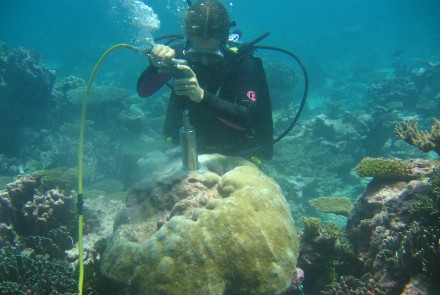Ocean primed for more El Niño

The ocean is warming steadily and setting up the conditions for stronger El Niño weather events, a new study has shown.
A team of US, Australian, and Canadian researchers sampled corals from a remote island in Kiribati to build a 60-year record of ocean surface temperature and salinity.
“The trend is unmistakeable, the ocean’s primed for more El Niño events,” says lead-author Dr Jessica Carilli, now based at the University of Massachusetts, Boston.
Team member Dr Helen McGregor from the Research School of Earth Sciences at The Australian National University said the change in El Niño patterns could have a major impact on Australia’s weather.
“During an El Niño event warm waters to the north of Australia move eastward, taking their rainfall with them,” she said.
“This changes the pattern of Australia’s rainfall and droughts significantly.”
El Niños occurs irregularly every two to seven years and have often coincided with severe droughts in Queensland and New South Wales. The current conditions show that a weak El Niño has brought warmer and drier conditions to Australia for late 2014.
The team focused on regional differences in sea temperatures that generate the circulating winds known as the Walker Circulation, which drive the trade winds that bring moisture across the Pacific Ocean to the north of Australia.
The island from which the corals were sampled, Butaritari, was chosen for its location at one end of the Walker Circulation.
The team extracted a core from a Porites coral on the outer part of the atoll which showed a clear layer structure that, like tree rings, told the seasonal life story of the coral.
“This coral quietly laid down an excellent record of the ocean conditions at that location,” Dr McGregor said.
“It greatly complements direct measurements of the ocean temperatures made by humans throughout the 60 year period, filling in the inconsistencies and gaps.”
The team used the amounts of the chemicals strontium, calcium and oxygen in the coral to work out the ocean’s salinity and temperature.
The research is published in Paleoceanography.
 Follow
Follow